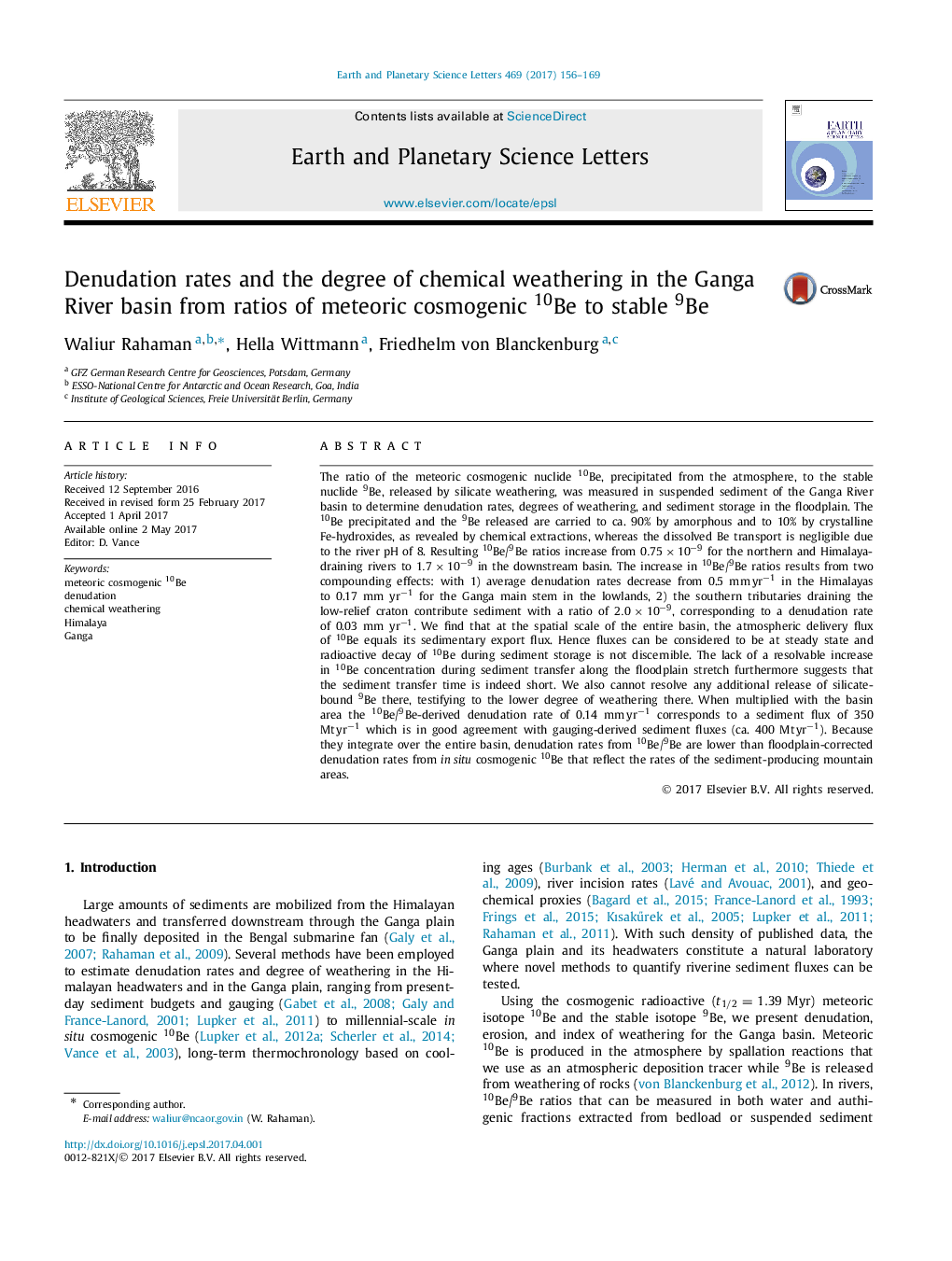| کد مقاله | کد نشریه | سال انتشار | مقاله انگلیسی | نسخه تمام متن |
|---|---|---|---|---|
| 5779864 | 1634687 | 2017 | 14 صفحه PDF | دانلود رایگان |

- Denudation rates of the Ganga basin have been derived from meteoric cosmogenic 10Be/(stable)9Be ratios.
- 10Be/9Be-derived D gives spatially averaged denudation of 0.14 mm/yr over the entire catchment.
- Meteoric 10Be deposition flux and 10Be export by river transport are in steady state.
- Sediment residence time from 10Be accumulation in Ganga floodplain is few thousand years.
- Weathering intensity estimates between upstream Ganga and downstream floodplain do not show resolvable variations.
The ratio of the meteoric cosmogenic nuclide 10Be, precipitated from the atmosphere, to the stable nuclide 9Be, released by silicate weathering, was measured in suspended sediment of the Ganga River basin to determine denudation rates, degrees of weathering, and sediment storage in the floodplain. The 10Be precipitated and the 9Be released are carried to ca. 90% by amorphous and to 10% by crystalline Fe-hydroxides, as revealed by chemical extractions, whereas the dissolved Be transport is negligible due to the river pH of 8. Resulting 10Be/9Be ratios increase from 0.75Ã10â9 for the northern and Himalaya-draining rivers to 1.7Ã10â9 in the downstream basin. The increase in 10Be/9Be ratios results from two compounding effects: with 1) average denudation rates decrease from 0.5 mmâyrâ1 in the Himalayas to 0.17 mm yrâ1 for the Ganga main stem in the lowlands, 2) the southern tributaries draining the low-relief craton contribute sediment with a ratio of 2.0Ã10â9, corresponding to a denudation rate of 0.03 mm yrâ1. We find that at the spatial scale of the entire basin, the atmospheric delivery flux of 10Be equals its sedimentary export flux. Hence fluxes can be considered to be at steady state and radioactive decay of 10Be during sediment storage is not discernible. The lack of a resolvable increase in 10Be concentration during sediment transfer along the floodplain stretch furthermore suggests that the sediment transfer time is indeed short. We also cannot resolve any additional release of silicate-bound 9Be there, testifying to the lower degree of weathering there. When multiplied with the basin area the 10Be/9Be-derived denudation rate of 0.14 mmâyrâ1 corresponds to a sediment flux of 350 Mtâyrâ1 which is in good agreement with gauging-derived sediment fluxes (ca. 400 Mtâyrâ1). Because they integrate over the entire basin, denudation rates from 10Be/9Be are lower than floodplain-corrected denudation rates from in situ cosmogenic 10Be that reflect the rates of the sediment-producing mountain areas.
Journal: Earth and Planetary Science Letters - Volume 469, 1 July 2017, Pages 156-169